On this page, you find detailed instructions on:
1. How to read the texts on Intertextual Dante;
2. How to find the intertextual passages;
3. How to search for specific categories of intertextuality.
First, an overview of all the features of the start page of Intertextual Dante:
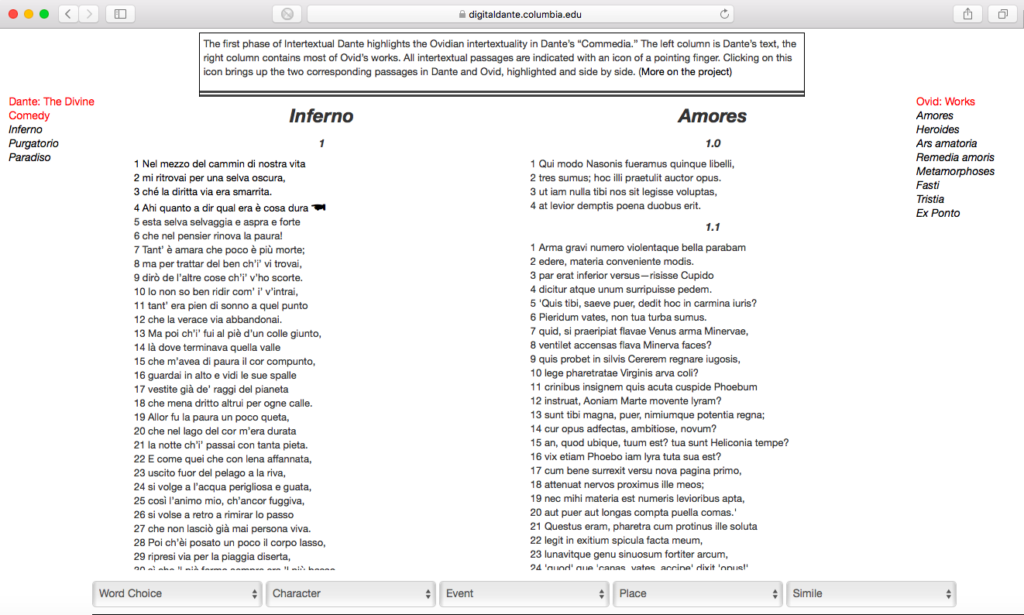
The left column features the text of Dante’s Divine Comedy while the right column contains his source texts — in the first phase, all works by Ovid that Dante used in the Divine Comedy. You can scroll up and down in both Dante’s and Ovid’s texts.
To navigate to a specific canto in the Divine Comedy or a specific poem or book within Ovid’s works, use the clickable tables of contents on the far left and right of the page (explained more below in “How to read the texts”).
All intertextual passages are indicated with the icon of a pointing finger (☚). Clicking on this icon will immediately retrieve the two corresponding passages in Dante and Ovid, highlighted and side-by-side. At the top of the page, a brief note explains the connection between the two passages. The tables of contents at the far left and right situate the passages within the correct canto (Dante) or poem or book (Ovid). Both features are explained in detail in “How to find the intertextual passages”.
The dropdown menus at the bottom of the page allow you to search for specific categories of intertextuality: word choice, characters, events, places, and simile (see also “How to search for specific categories of intertextuality”).
Detailed instructions:
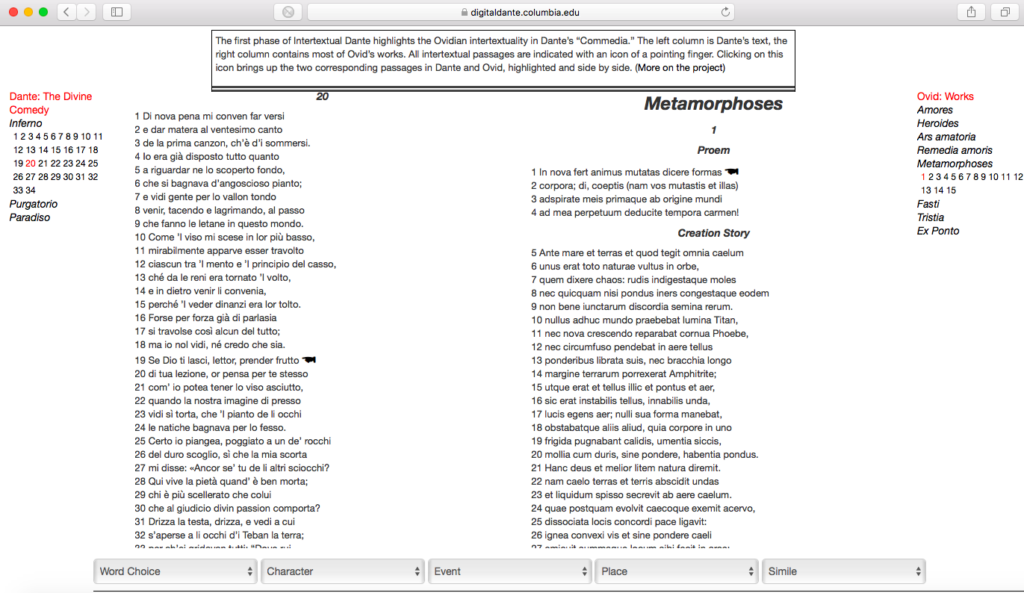
The left column contains the text of Dante’s Divine Comedy, the right all Ovidian works used in the Divine Comedy.
You don’t need to read the texts in order or scroll up and down to move within the texts; the clickable tables of contents on the far left or right side of the page allow you to immediately skip to a specific canto of the Divine Comedy, or poem or book within Ovid’s works. The Divine Comedy is divided into canticles and cantos. Ovid’s Amores, Heroides, Tristia, and Epistulae ex Ponto are divided into poems; the Ars amatoria, Metamorphoses, and Fasti are divided into books. In this example, we’ve selected canto 20 of the Inferno and Book 1 of Ovid’s Metamorphoses.
2. How to find the intertextual passages
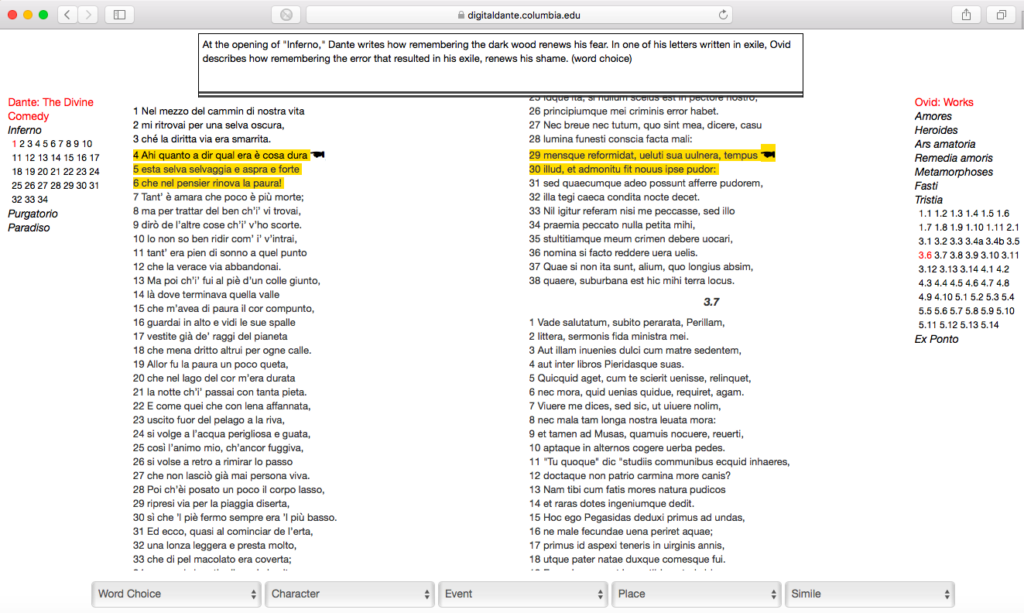
All intertextual passages are marked in the texts with the icon of a pointing finger (☚). Clicking on this icon matches up the two corresponding passages.
More precisely, when you click on the icon, the entire passage in that text is highlighted in yellow (in the above example, Inf. 1.4-6, with the icon next to the first verse of the passage, Inf. 1.4), and the other text column scrolls up or down to the corresponding passage that is also highlighted in yellow (in the example, Ovid’s Tristia 3.6.29-30).
You’ll notice a few other features that change when you click on the pointing finger icon:
- the tables of contents on the far left and right side of the page now situate the two passages within their respective works (in the example, Dante’s Inferno 1 and Ovid’s Tristia 3.6);
- in the text box on top of the page, a note appears to explain the connection between the two passages.
To further explore the context of both passages, the reader can scroll up and down to read the entire canto of the Inferno or the entire poem in Ovid’s Tristia.
3. How to search for specific categories of intertextuality
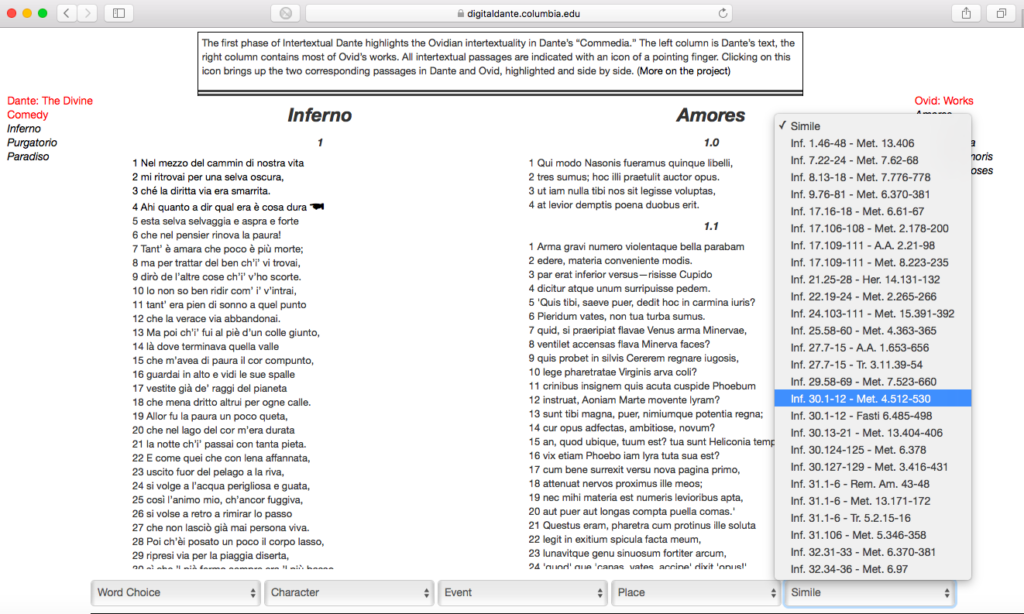
At the bottom of the page, the five dropdown menus divide the intertextual passages into categories: word choice, character, event, place, simile. These categories can be searched separately: for instance, you can look for specific Ovidian characters to see where they reappear in the Divine Comedy, or find where Dante uses Ovid-inspired similes. In the above example, one of the similes in Inferno 30 is selected.
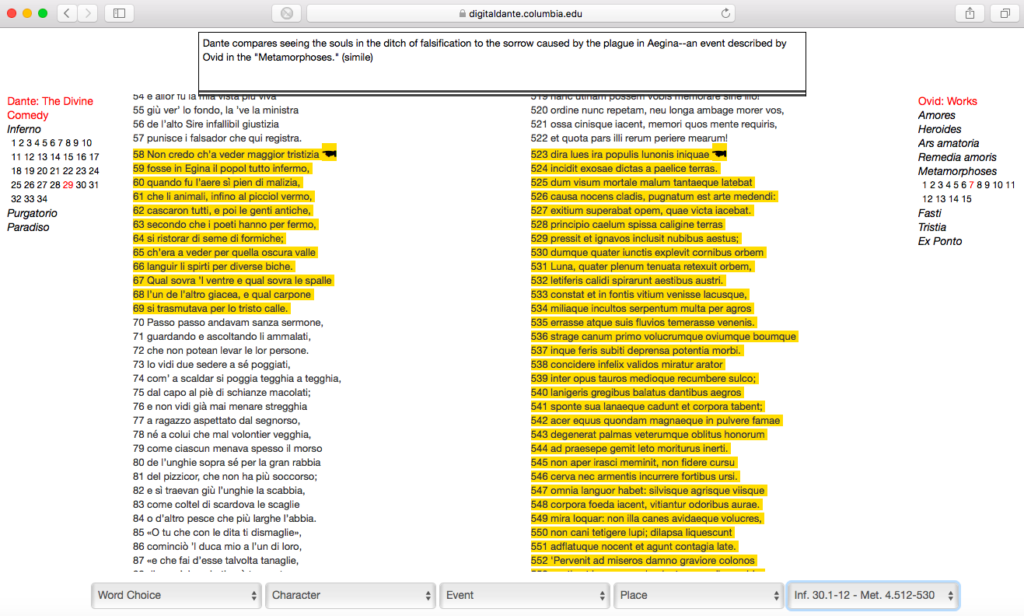
Clicking on this entry in the dropdown menu immediately retrieved the two corresponding passages in Dante’s Inferno 30 and Book 4 of Ovid’s Metamorphoses.
 Return to top
Return to top